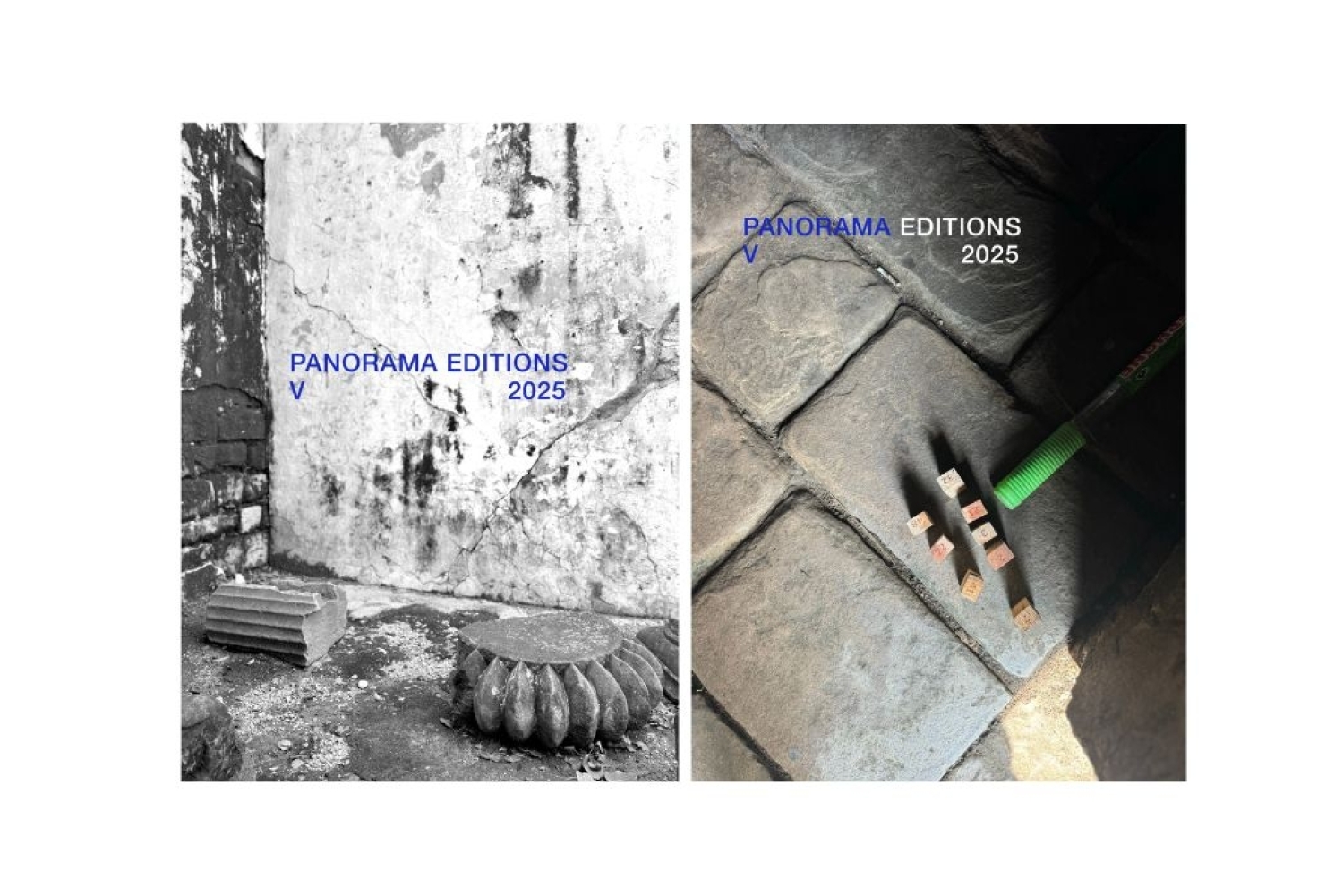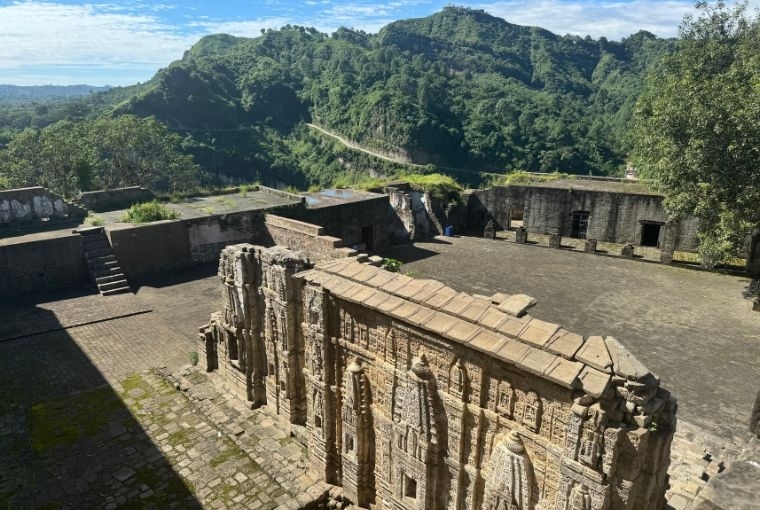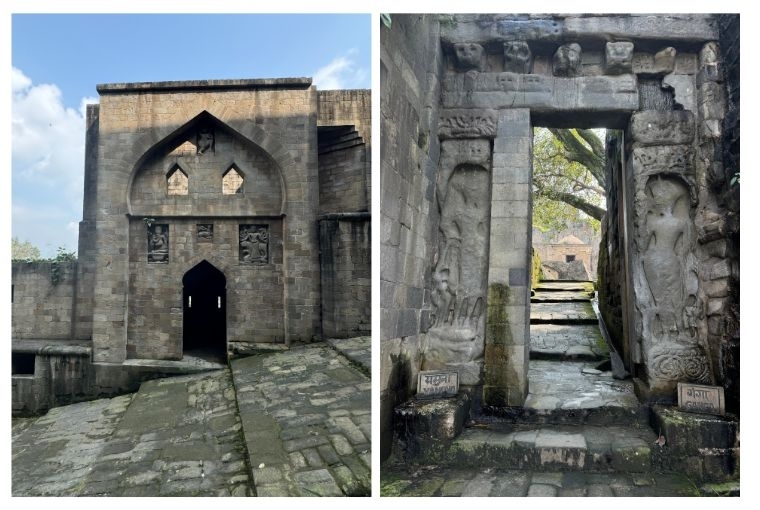
Photos by Sarah Singh

Photos by Sarah Singh
Through Panorama Editions, her site-inspired art salon that combines architecture, theatre, film, and design, artist Sarah Singh has been reimagining historic forts since 2017. Every edition, which is based on local-global cooperation, turns its site into a living artwork. She uses cultural artefacts, international collaborations, and the energy of the land itself to create multidisciplinary experiences. The upcoming Dharamsala edition at Kangra Fort is titled TEN NIGHTS BY A LOST RIVER, and will explore the theme of power, and the different ways in which it manifests. Her co-partners for this edition are the Royal Family of Kangra and Lambagraon, and the Maharaja Sansar Chandra Museum. She discusses the project's development, the curatorial approach, and how her varied artistic practice influences each edition.
Tell us about your journey and the intention behind Panorama Editions.
I founded Panorama Editions in 2017, and launched the first project in 2018, in Qila Mubarak, an 18th century fort that belonged to my family, located in Patiala, Punjab. After this, I was invited to work on Mehrangarh Fort in Jodhpur in 2019, following which I have done a project every year, barring the pandemic, across the country, in many different forts. I am now working on the sixth edition, at Kangra Fort in Himachal.
As the project has occurred over time in different locations, it has taken on different forms, shapes and sizes due to its site-specific nature. It is site inspired, and the collaboration process is local, as well as international—the idea is to bring the local into a broader dialogue.
What prompted you to curate this experience in Dharamsala—what do you think it has to offer?
The first time I visited the Kangra Fort was in 2018, with some friends from Belgium and New York, who had participated in the first edition in Patiala. I stayed with the royal family, and Her Highness Chandresh Kumari, our host here, advised us on what to do with our time. One of the locations that she recommended was the Kangra Fort. The view of the fort, which is located on top of a hill, with two rivers below, is quite startling in itself. Once we walked up and saw it, we were able to see what remained of the fort, post the 1905 earthquake. There was one area in particular—when I saw it, I had this flash of a vision of a certain kind of theatre happening, amongst half broken columns and sculptures. The interior of the fort prompted a very strong visual reaction, and this was the first seed of inspiration.
Since then, it was always on my mind, and I kept thinking that it would be the next one, after Punjab. But when I got the invitation for Jodhpur, I went forward with that, and other invitations came up, because of which the possibility of coming up here kept being postponed. Now, finally, in 2025, seven years after first seeing the fort, I am finally able to execute the project here, keeping in mind the original vision that I had, which is being incorporated into this project.

Tell us about the curatorial process for this edition. What did you want to highlight?
I knew intuitively, early on, that the theme for this location should be power. Each location has had a different theme, concept, and structure, based on what I understand from the landscape, location, the architecture of the fort, and the various ways in which the space unfolds. All of this informs my central curatorial idea and creative conception. Working on site requires addressing lighting, sound, movement, texture, angle, and perspective. These spaces are not white boxes, so one has to think about how people move through them. For me, the salon itself is an artwork. That is why I do not think of it as an event or festival. Each location is different, as a result of which, each salon is unique.
Collaboration is also central. For this location, in this project, one of the major collaborations is with young fashion and design students of NIFT, Kangra. I am working with them on design interventions, backstage work, and even performance, which gives them a multi-layered experience beyond traditional fashion. Local contemporary dancers, as well as folk dancers and folk musicians are a part of the project as well.
There are a dozen international partners and many local Indian partners. Jaipur Rugs, Dharamsala Tea Company, and Peter D’Ascoli are key India partners, with Peter D’Ascoli providing a distressed brocade textile for the tent. The Liszt Institute will host the exhibition in New Delhi, after the project in Kangra.
We will also have a free public concert by Spanish musician, Le Parody, in collaboration with Instituto Cervantes and AIE. There are archival and cultural objects from Mexico, Argentina and Guatemala. International collaborations also include a garment from the Embassy of Sweden and the Swedish School of Textiles and a contemporary, custom hat, inspired by 18th century Portuguese military, supported by the Camoes Cultural Institute. We have performance artists from Hungary, supported by The Liszt Institute and from Austria, supported by Austrian Cultural Forum and Embassy of Austria. From Ireland, we have a very special silent film by Richard Malone, which explores fashion and various themes of power through fashion.

You indulge in many forms of expression—film, photography, art, theatre, poetry and more—how do they all come together while you curate?
The project requires me to think from a complex set of layers. For instance, how and if the audience moves, and also ultimately, how performers engage with the space through this theatrical installation. The use of non-traditional, non-white box stages continues along the origins of theatre, when performance took place outdoors, on streets, in remote landscapes. One is engaging not just with architectural space, but also the broader environment: the landscape, light, and sound. Architecture is a moving image, and these are all elements that become part of a living experience of this theatre. Since I’m not choosing an enclosed, conventional space, the living environment in which the historic architectural structure is becomes a character of the piece as well. That brings magic and electricity to the experience, which is important for the audience in furthering direct engagement with performance. This is crucial in an age where we increasingly experience things indirectly, or through screens. It is also central to the origin of this platform, which is about bringing people together. Theatre is that kind of art form in which many art forms are composed, while allowing for an ethereal, momentary quality, since this is not a piece that gets repeated. It has to be captivating as a piece itself, which is why all these layers must individually be as interesting as they can be.
Words Neeraja Srinivasan
Date 30-09-2025